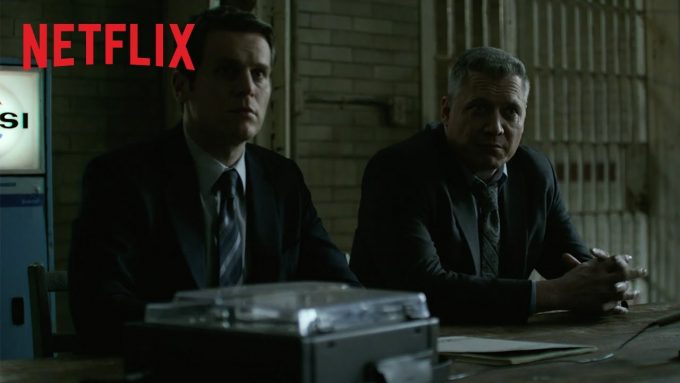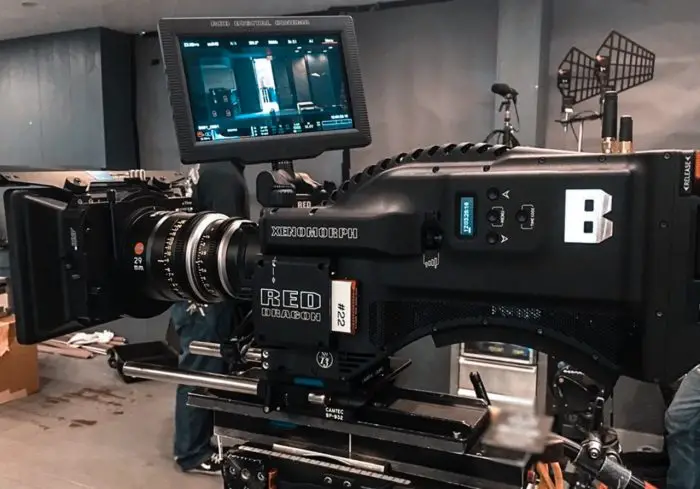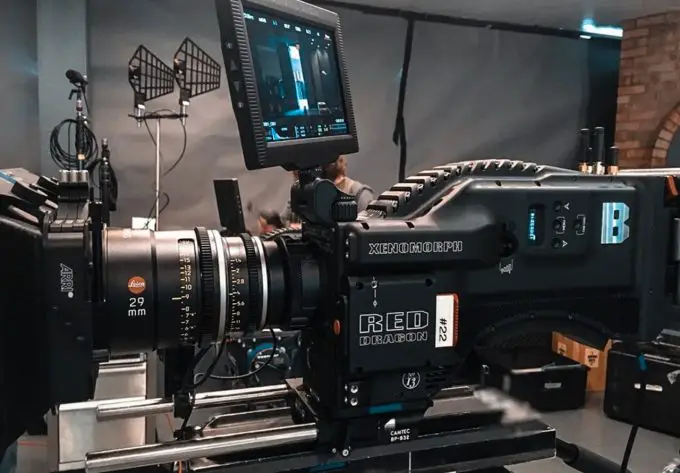How do you make a 10-hour episodic drama that’s basically 90% people sitting down and talking, not just exciting and thrilling, but also fascinating from a visual and storytelling standpoint? Well, you give it to the guy, who is unlike any other director in Hollywood and one that know’s a thing or two about creating exquisite cinematic works of art out of stories about serial killers. Of course, I am talking about David Fincher – one of the most cerebral, uncompromising and fascinating filmmakers of our times. There’s is nothing I can say about the man that hasn’t already been said, so I’ll just keep my obsession with his work in the confines of his latest Netflix project – “Mindhunter“.
If you have not seen “Mindhunter” yet, I highly recommend you see it as soon as possible. A fascinating period piece about a group of FBI agents in the 1970s, set out to uncover the psychology behind serial killers, “Mindhunter” is shot and edited in that very-cerebral “to the point of surgical precision” style we’ve come to expect from Fincher.
The underlying obsession of the main protagonists to uncover the makings of a murderer bears a striking resemblance to the editorial team’s preoccupation with achieving filmmaking perfection. Very much like in prior projects such as “Gone Girl”, which happened to be the 1st feature film acquired exclusively in 6K, Fincher and his editing and post-production team utilised the latest Adobe Creative Cloud software such as Premiere Pro and After Effects in “Mindhunter“.
David Fincher works with the top echelon of post-production pros, that also happen to share his obsessive work ethic, passion for filmmaking, and willingness to push boundaries. Peter Mavromates, a producer and post-production supervisor on multiple Fincher projects, and previous collaborators – editors Kirk Baxter and Tyler Nelson, along with Assistant Editor Billy Peake and In-house VFX Compositor Christopher Doulgeris, are all veterans on his team.
“As editors, we are very similar to the FBI characters,” says Byron Smith, one of the editors. “We are like investigators obsessing over footage to bring out the best in every detail to make each shot as enriched as possible.”

Mindhunter was shoot in 6K for a 5K extraction, which also gave the post-production team more room to reframe shots as needed. This approach enables them to move a shot left, right, up, or down in post-production without destroying the original framing or impacting the intent of the DP.
“Rather than punching in and losing content, we can fine-tune the way a scene looks or the way two shots play together while remaining faithful to the original shot,” says Billy.
For me personally, one of the most fascinating aspects of the show is the fluidity of the dialogue, and as such is the case with most Fincher films, the editing of such is taken to another level.
A common technique Fincher’s post-production team uses is to stabilize shots to smooth out the motion and create a unique visual tone. While some basic compositions were achieved in Premiere Pro, the team enhanced approximately 90% of shots with Adobe After Effects, with assistant editors using Dynamic Link between Premiere Pro and After Effects to create the temporary offline VFX.
One more fascinating aspect of the 10-hour Netflix procedural thriller, is the fact that it was shot on custom-made RED cameras dubbed RED Xenomorphs, and were designed exclusively for David Fincher to fit his precise specifications. You can see some photos of these cameras below (which most of you have already seen probably over at Reduser) by Christopher Probst, who was a DP on a few episodes.


For more info on these cameras (which you can’t buy or rent) you can head over to this thread on Reduser.net and dig deeper.
And last, but certainly not least, behold this awesome VFX reel by Artemple Hollywood, showcasing the numerous VFX shots and tricks used in “Mindhunter“:
Those of you who’ve seen the show, I’d love to hear your thoughts on it in the comments below, and also your other picks for subtle VFX in recent TV shows or movies.
You can read more about the editing and VFX process with Adobe Premiere Pro and After Effects on Adobe’s blog here.
Disclaimer: As an Amazon Associate partner and participant in B&H and other affiliate programmes, we earn a small comission from each purchase made through the affiliate links listed above at no additional cost to you.




I still marvel at how the upper echelon of post pros can wrangle and put up with the buggy as f*ck Premiere with 6k red and especially that magically misnamed dynamic link. The must also have xenomorph computers.